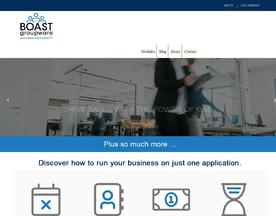Client onboarding is the process of welcoming a new client to your business and introducing them to your products, services, and processes. It’s an essential step in building a strong working relationship with your clients, as it helps to set clear expectations, establish effective communication, and ensure that both parties are on the same page from the start.
A thorough onboarding process can help to reduce the risk of misunderstandings or miscommunications down the line, as well as increase the chances of a successful project. It’s an opportunity for both the client and the business to get to know each other, discuss goals and objectives, and make sure that everyone is on the same page.
Effective client onboarding also helps to ensure that clients feel supported and valued from the start. It demonstrates that you are committed to providing a high level of service and are invested in their success. This can help to build trust and foster a positive working relationship, which is essential for the long-term success of any business.
In this blog post, we’ll be exploring the importance of a thorough client onboarding process and providing a checklist of tasks and activities to help you get your new clients up and running smoothly. By following these best practices, you’ll be able to set your clients up for success and establish a strong working relationship from the start.
Preparation for Onboarding
Preparation is key when it comes to client onboarding. Before you even begin the process, it’s important to gather all of the necessary information and documents from the client. This may include contracts, agreements, or other legal documents that need to be reviewed and signed. It’s also a good idea to set up a project management tool or system to help you keep track of tasks and deadlines.
Once you have all of the necessary information and tools in place, it’s time to assign tasks and responsibilities to your team members. This could include setting up any necessary accounts or access to tools or systems, as well as providing any necessary training or resources.
It’s also a good idea to schedule an initial meeting with the client to introduce yourselves and discuss the onboarding process and timeline. This is an opportunity to address any questions or concerns the client may have, as well as establish communication protocols and frequency.
Setting clear expectations is also an important part of the onboarding process. This includes reviewing the scope of work and deliverables with the client, as well as discussing their goals and objectives for the project. By establishing these expectations up front, you can help to ensure that everyone is on the same page and working towards the same goals.
Overall, the preparation phase of onboarding is all about gathering the necessary information, tools, and resources, and setting the stage for a successful and productive working relationship with your new client. By taking the time to prepare thoroughly, you can set your clients up for success and build a strong foundation for your working relationship.
Initial Meetings and Communication
Once you have completed the preparation phase, it’s time to begin the actual onboarding process. This typically involves a series of tasks and activities designed to get your new client up and running smoothly.
One of the first tasks in the onboarding process is typically to review and sign any necessary contracts or agreements. This may include contracts outlining the scope of work, deliverables, and payment terms, as well as any non-disclosure or confidentiality agreements.
Next, you’ll need to set up access to any necessary tools or systems. This could include access to project management or collaboration tools, or access to proprietary software or platforms. If your client will be using any of your company’s proprietary systems or tools, it’s important to provide them with the necessary training or resources to ensure that they are able to use them effectively.
In addition to these tasks, it’s also important to provide ongoing support and communication throughout the onboarding process. This may involve answering any questions or concerns the client may have, as well as establishing a regular check-in schedule to keep them informed of progress and address any issues that may arise.
Overall, the onboarding process is all about making sure that your new client has everything they need to get up and running smoothly, and that they feel supported and valued throughout the process. By following a thorough onboarding checklist and providing ongoing support and communication, you can set your clients up for success and establish a strong working relationship from the start.
Setting Expectations
While client onboarding is an essential process for building a strong working relationship with your clients, it’s also important to be mindful of the potential challenges and pitfalls that can arise. One common challenge is managing client expectations. It’s important to be upfront and transparent about what you can and cannot deliver, and to set clear expectations around the scope of work and deliverables.
Another potential challenge is communication. It’s important to establish clear communication protocols and frequency from the start, and to be responsive to any questions or concerns that your clients may have. This can help to avoid misunderstandings or miscommunications down the line.
It’s also important to be flexible and adaptable, as the needs of your clients may change over the course of a project. This may involve adjusting the scope of work or timeline, or providing additional resources or support as needed. By being open to change and willing to adapt, you can help to ensure that your working relationship stays strong and that your clients feel supported throughout the project.
Overall, the key to overcoming challenges in client onboarding is to be proactive and transparent. By being upfront about what you can and cannot deliver, and being responsive to the needs and concerns of your clients, you can help to build trust and foster a positive working relationship. By taking the time to address any challenges that come up, you can position your business for long-term success.
Onboarding tasks and activities
Onboarding tasks and activities are the specific steps and processes involved in welcoming a new client to your business and introducing them to your products, services, and processes. These tasks and activities are designed to help your new clients get up and running smoothly, and to establish a strong foundation for your working relationship.
Some common onboarding tasks and activities include:
- Reviewing and signing any necessary contracts or agreements: This may include contracts outlining the scope of work, deliverables, and payment terms, as well as any non-disclosure or confidentiality agreements.
- Setting up access to any necessary tools or systems: This could include access to project management or collaboration tools, or access to proprietary software or platforms.
- Providing necessary training or resources: If your clients will be using any of your company’s proprietary systems or tools, it’s important to provide them with the necessary training or resources to ensure that they are able to use them effectively.
- Establishing communication protocols and frequency: It’s important to establish clear communication protocols and frequency from the start, to help avoid misunderstandings or miscommunications down the line.
- Reviewing the scope of work and deliverables: By reviewing the scope of work and deliverables with your clients, you can help to set clear expectations and ensure that everyone is on the same page.
By following a thorough onboarding checklist and completing these tasks and activities, you can set your new clients up for success and establish a strong foundation for your working relationship.
Conclusion
Client onboarding is an essential process for building a strong working relationship with your clients. By taking the time to thoroughly prepare for onboarding, setting clear expectations, and providing ongoing support and communication, you can set your clients up for success and position your business for long-term success.
A thorough onboarding process helps to reduce the risk of misunderstandings or miscommunications down the line, and can increase the chances of a successful project. It’s an opportunity for both the client and the business to get to know each other, discuss goals and objectives, and make sure that everyone is on the same page.
Effective client onboarding also helps to ensure that clients feel supported and valued from the start. It demonstrates that you are committed to providing a high level of service and are invested in their success. This can help to build trust and foster a positive working relationship, which is essential for the long-term success of any business.
By following the best practices outlined in this blog post, you can create a seamless onboarding experience for your clients and establish a strong foundation for your working relationship. Whether you’re a small business owner or a member of a larger organization, these tips will help you get your new clients up and running smoothly and position your business for success.















